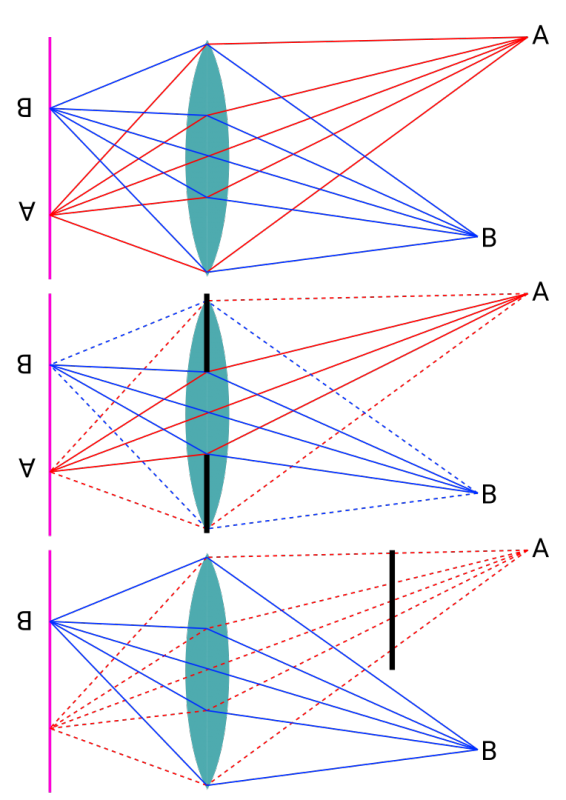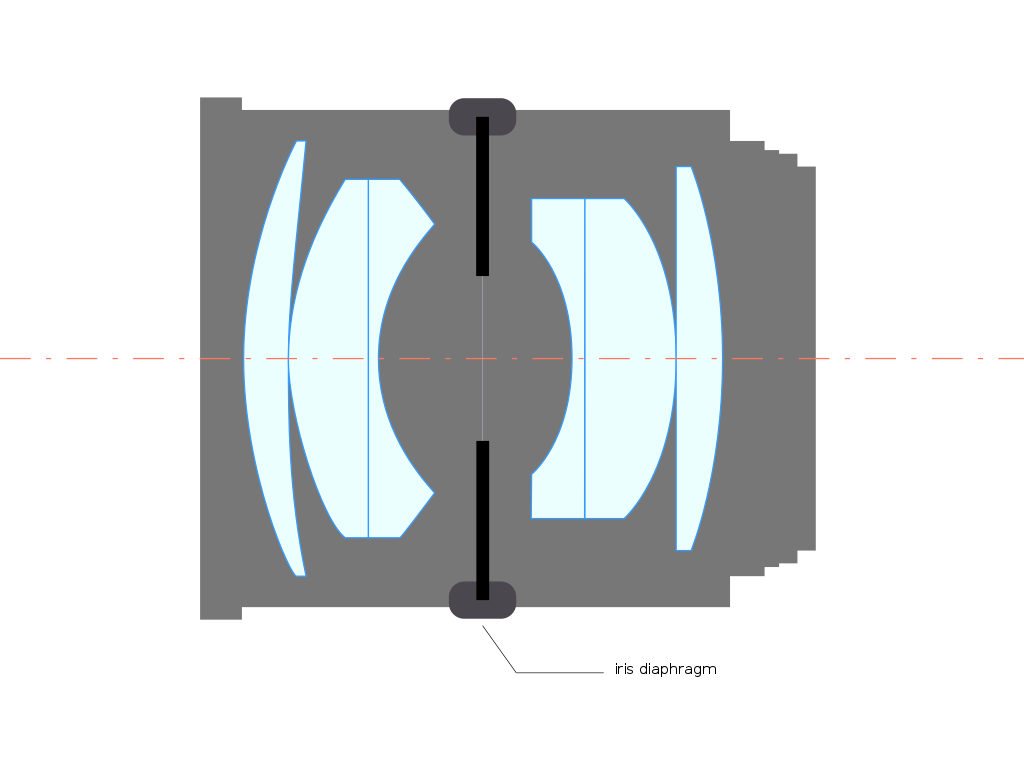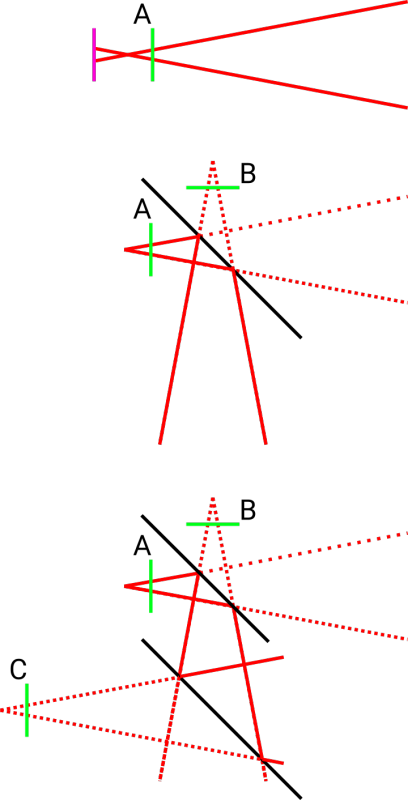Difference between revisions of "Mono-lens stereo beam splitter"
(→Aperture vs field diaphragm/mask) |
(→Aperture vs field diaphragm/mask) |
||
| Line 12: | Line 12: | ||
[[File:Diaphragm.png|center|x800px]] | [[File:Diaphragm.png|center|x800px]] | ||
| + | |||
| + | =Mirror system, one side= | ||
| + | |||
| + | *TOP: without mirror, the pink line is your sensor, the green line A is your shot (what you see when holding the final picture in front of your eyes) | ||
| + | *MIDDLE: with one mirror, your shot is in fact mirrored as if it would be the virtual green line B | ||
| + | *BOTTOM: with two mirrors, your shot becomes the virtual green line C | ||
| + | |||
| + | [[File:StereoMirrorOneSide.png|center|x800px]] | ||
Revision as of 09:36, 16 April 2021
Aperture vs field diaphragm/mask
- TOP: all the light rays coming from one point though the lens, supposed point A, is sent to a single point of the picture (when focused).
- MIDDLE: if you have a diaphragm/mask very very close to the lens (ideally inside the lens system), you are reducing the light rays, keeping the whole scene with less light. You have an aperture diaphragm/mask.
- BOTTOM: if your diaphragm/mask is far from the lens (according to its size), you simply hide all the light of a part of the scene (suppose you are hiding all the light from point A), keeping the light of the other part of the scene (suppose point B). You have a field diaphragm/mask.
To be able to do stereo shots, you need your mirrors to act like 2 complementary field masks, thus being not-to-close to the lens.
Diaphragm included in a lens system:
Mirror system, one side
- TOP: without mirror, the pink line is your sensor, the green line A is your shot (what you see when holding the final picture in front of your eyes)
- MIDDLE: with one mirror, your shot is in fact mirrored as if it would be the virtual green line B
- BOTTOM: with two mirrors, your shot becomes the virtual green line C


